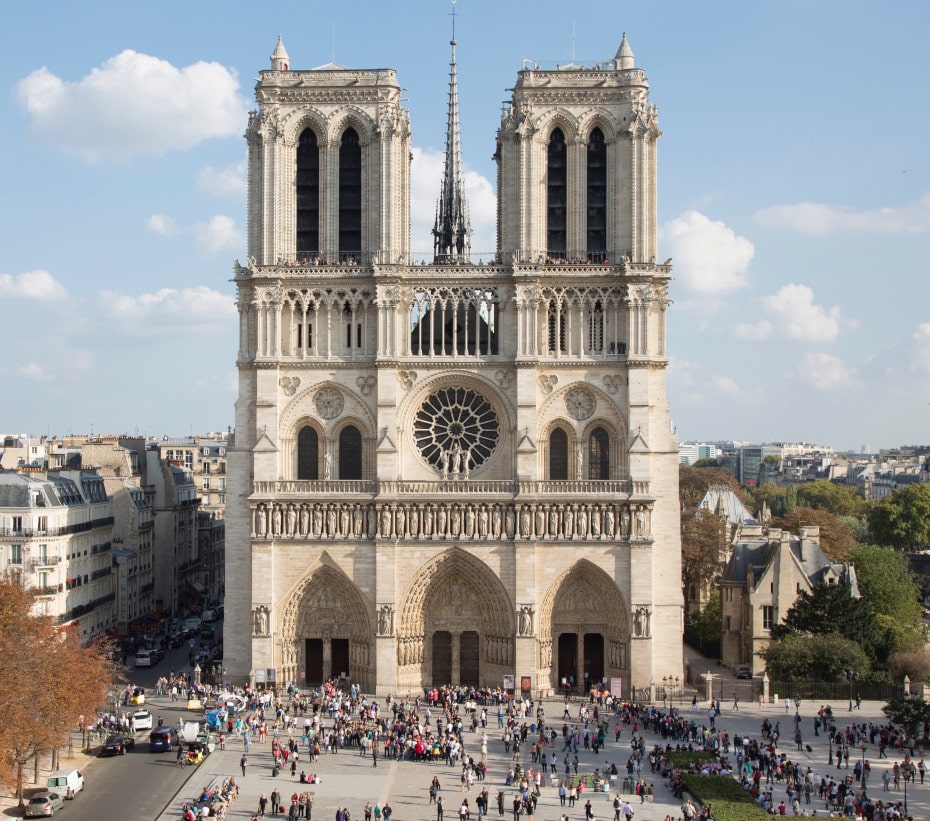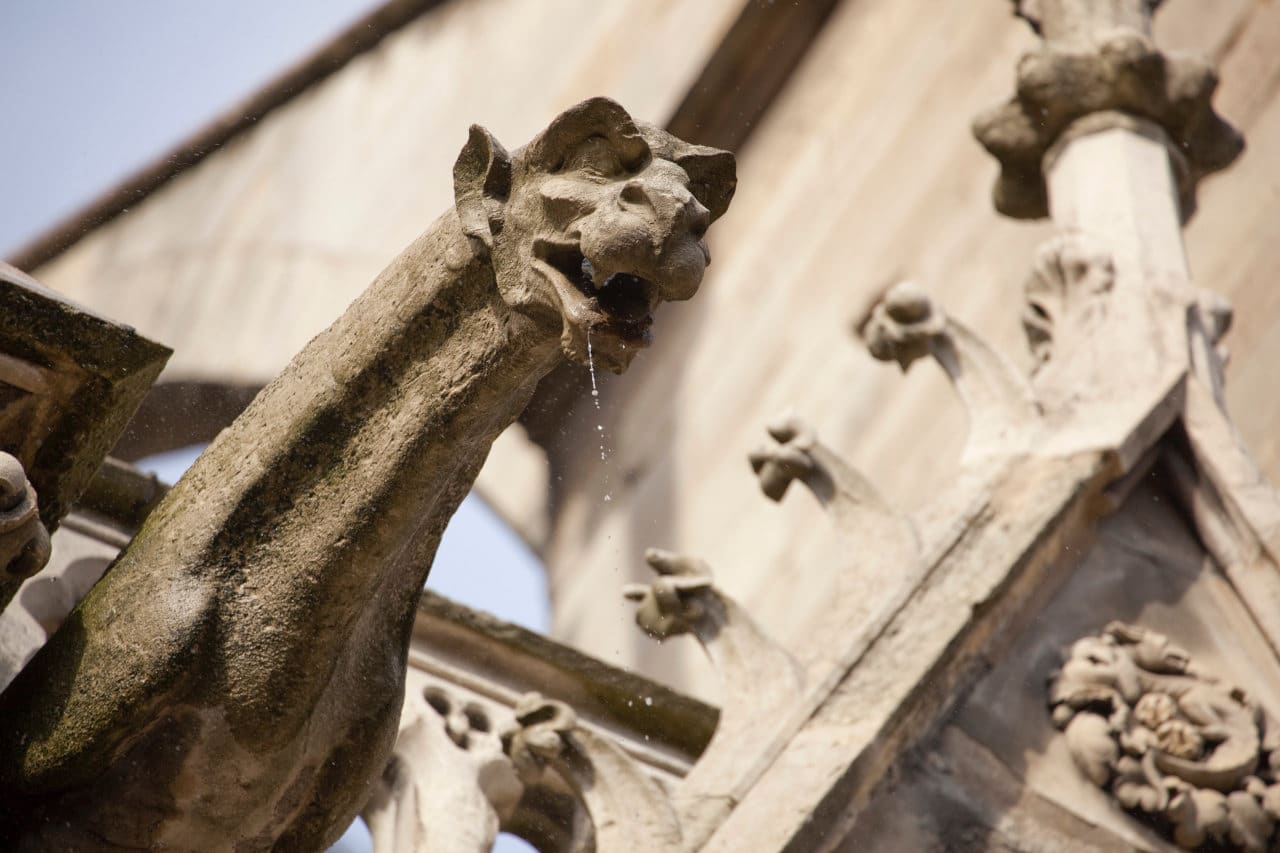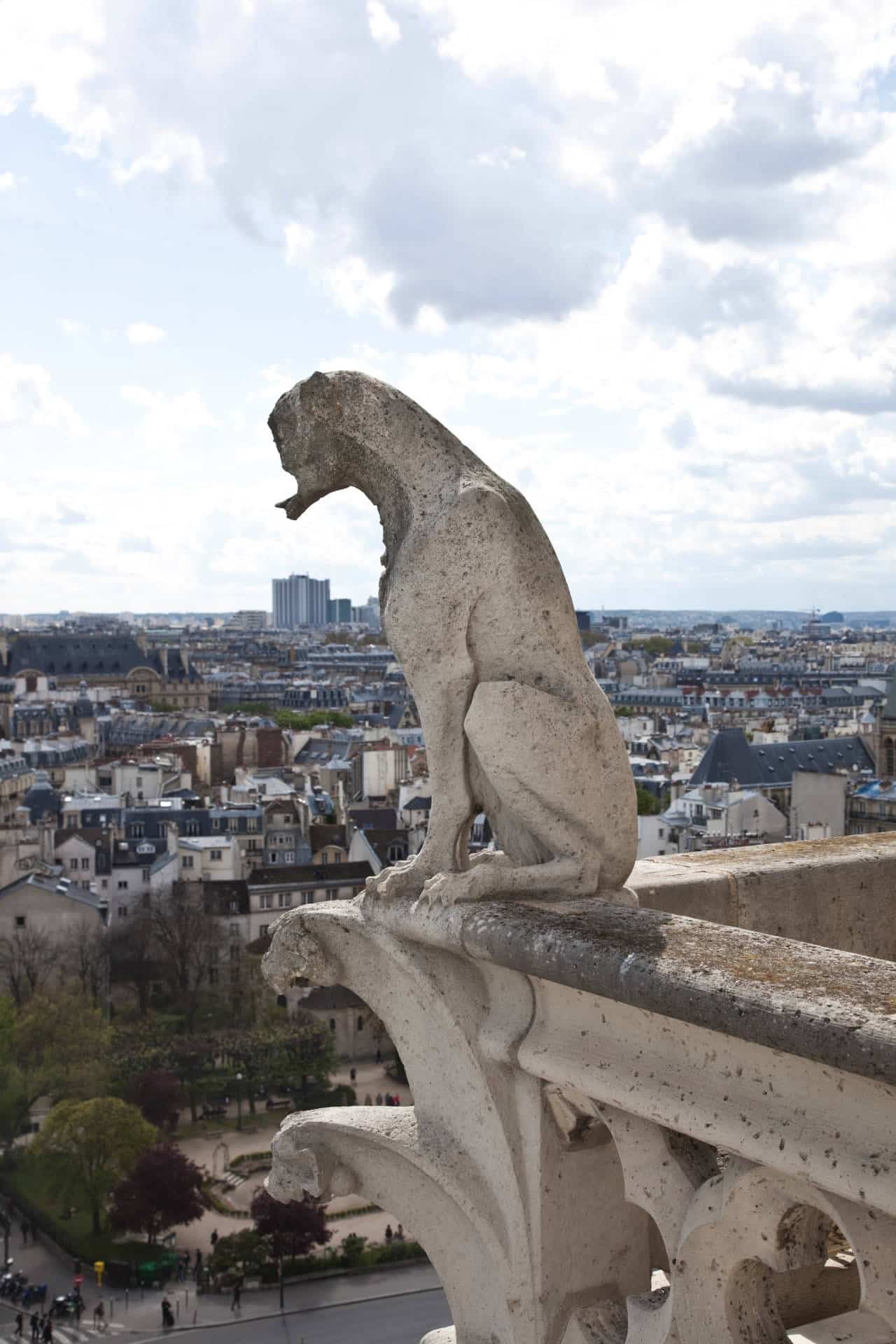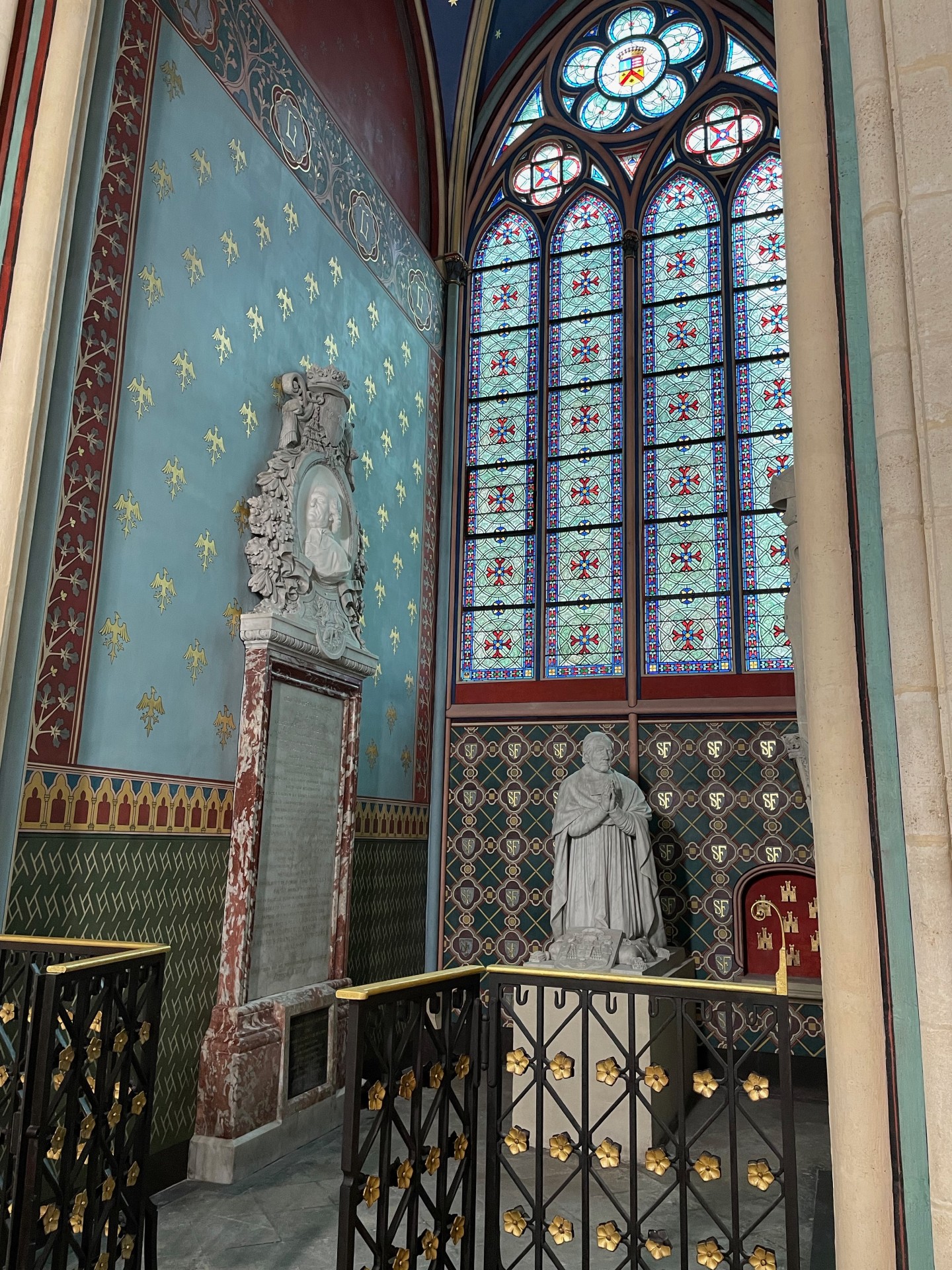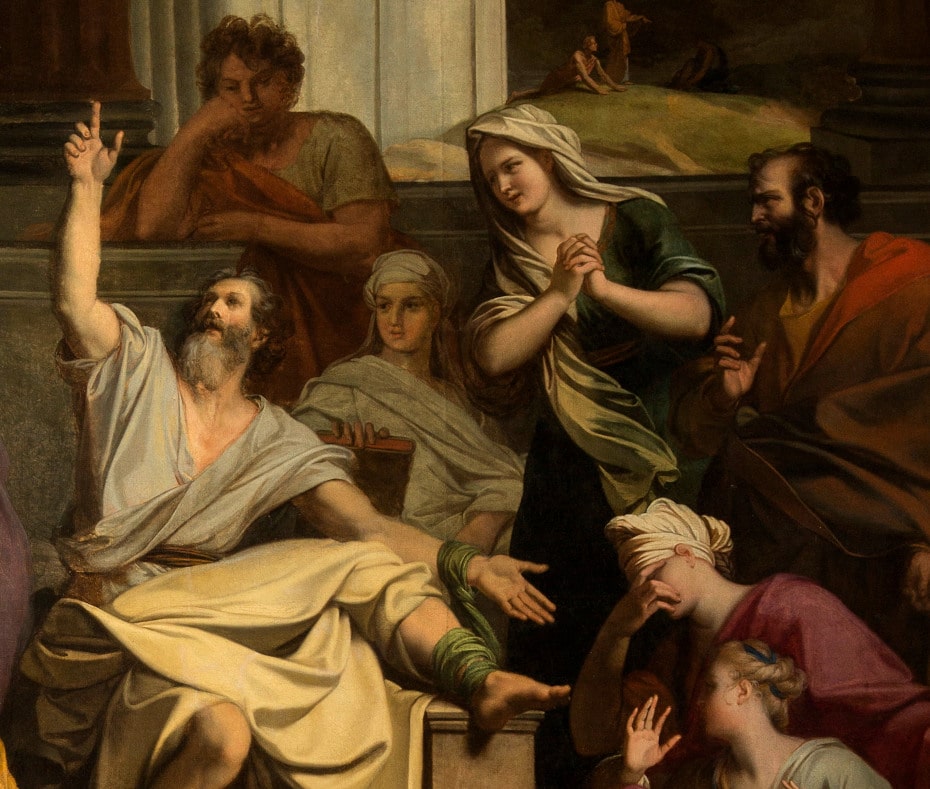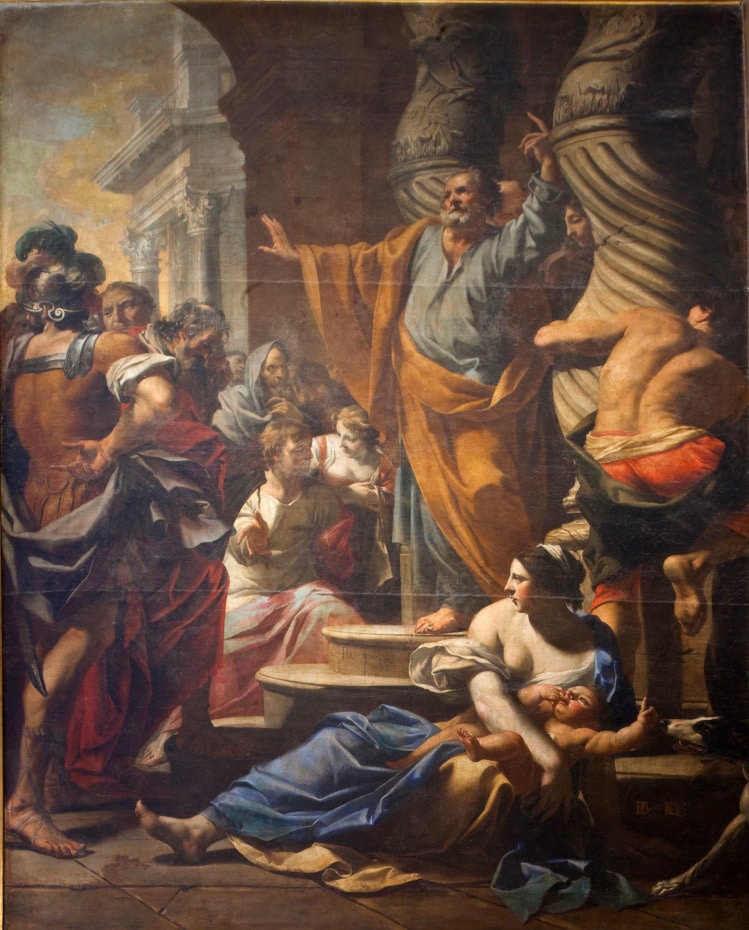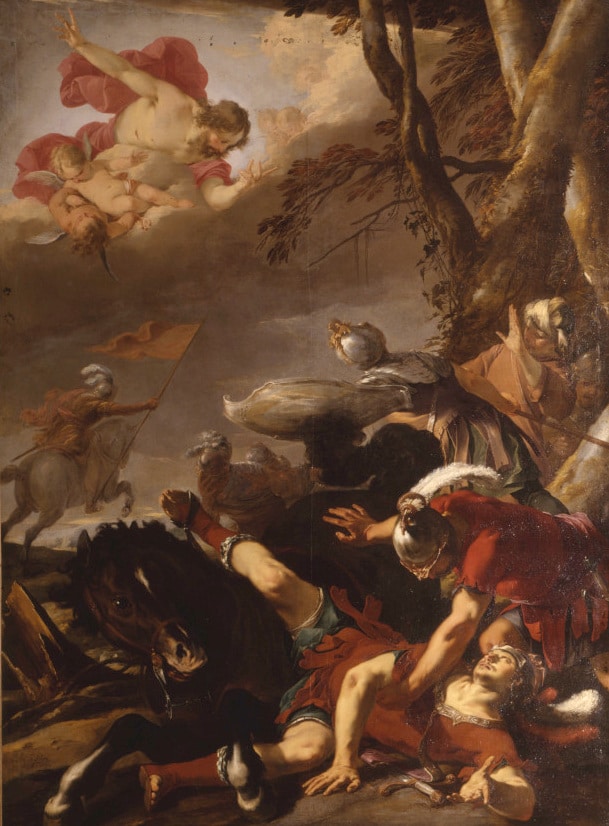The western façade is the result of innovative architecture in its time. Its style reflects a regular rhythm of horizontal and vertical lines. Large portals welcome visitors into Notre-Dame Cathedral, while the square towers house the bells.
Construction of the western facade began in 1200 under Bishop de Sully and continued with Bishop Guillaume d’Auvergne, counselor and confessor of Saint Louis. It ended with the construction of the north tower in 1240 and the south tower in 1250. The west façade has several functions: it is the point of entry for visitors, the entrance of western light, it houses and diffuses the sound of the bells in the towers.
The western façade is based on a set of vertical lines (four buttresses and two towers) and horizontal (portals, gallery of kings, bays, columns). Its imposing dimensions are a technological feat for the time: 43.5 meters wide and 45 meters high, measuring 69 meters with the towers. The harmonious simplicity of the façade’s proportions inspired the architect Le Corbusier to speak of a pure creation of the spirit managed by the square and the circle, hence its geometric purity. The square symbolizes the rational world, the limited space, while the circle symbolizes the spiritual state, the limitless, the divine.
The portals make up the lower part of the western façade: three portals constitute the lower part of the façade: the portal of the Last Judgement in the center, the portal of the Virgin on the left and the portal of Saint Anne on the right. These portals are decorated with many biblical figures. This was so the faithful who could not read the Bible could still understand the gospel and the history of Christians through pictures. On the façade’s buttresses, niches contain four statues remade by the workshop of Viollet-le-Duc in the 19th century; from left and right, probably Saint Stephen and Saint Denis, and on either side of the central portal, the allegories of the Church and the Synagogue.
Under the balustrade, a horizontal band presents the gallery of kings. It forms a series of 28 characters illustrating the 28 generations of the kings of Judea, preceding Christ. During the Revolution, the statues were destroyed or mutilated, wrongly associated with the sovereigns of the kingdom of France. During the 19th century restorations of Notre-Dame Cathedral, the workshops of Adolphe-Victor and Geoffroy-Dechaume produced the statues which are visible today. In 1860, the sculptor Chenillon left inscriptions on certain statues. Thus, Pierre Émile Queyron, the first Inspector of Notre-Dame appears as Ahab, Viollet-le-Duc as Ela and Antoine Lassus as Amasias. Twenty-one original heads were found in 1977, during restoration work on rue de la Chaussée d’Antin in the 9th arrondissement. They are exhibited at the National Museum of the Middle Ages in Paris (Cluny Museum). The heads retain traces of polychromy, proof that the 13th century cathedral was painted.
The gallery of the kings is topped by a small terrace bordered by an openwork balustrade which forms the gallery of the Virgin. In the center, a rose window 9.6 meters in diameter pierces the façade, made around 1225. Two angels, with candlesticks symbolizing “fault” and “redemption”, surround a central statue of the Virgin. This set was ordered by Viollet-le-Duc to replace the damaged statues and was produced in 1854 by Geoffroy-Dechaume. Viollet-le-Duc placed statues of Adam and Eve (sculpted by Jean-Louis Chenillon) placed on each side of the rose window. Some experts believe that the statues of Adam and Eve would have their place in the niches of the transept on the south façade.
The two square towers are 69 meters high, whose summit is accessible by 422 steps. The towers’ four sides are pierced with two high arched bays adorned with rolls and leafy hooks. They are covered with a lead terrace bordered by an openwork balustrade. The south tower was built around 1220-1240, then the north tower between 1235 and 1250. The towers offer an exceptional view over the center of Paris. Their height allowed pilgrims visiting Notre-Dame Cathedral to find their way from afar. Spires were considered in the 13th century to top the towers, but they were never built. The towers house the bronze bells and the great “Bourdon Emmanuel” bell.
